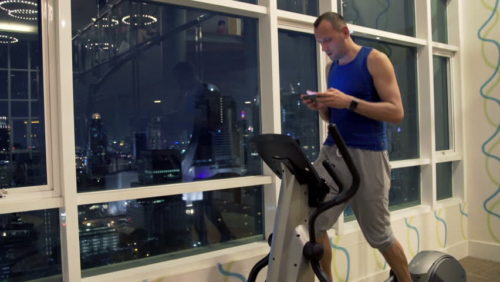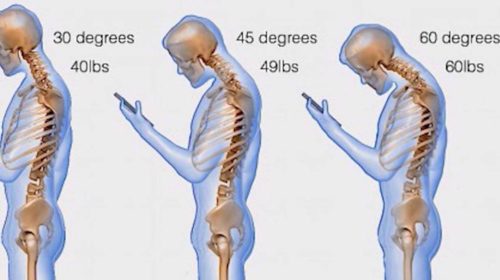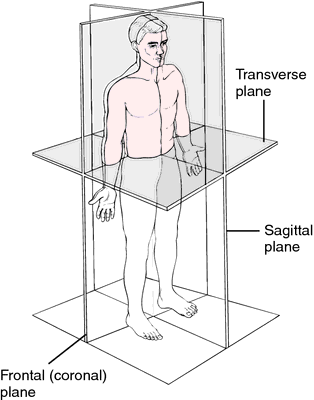
I love to go to the gym. It’s something I got back into after years of only practicing yoga and running. Â I realized running was great for my heart but really only two dimensional (only moving through flexion and extension) and the more I practiced yoga, I wanted to do something for my heart (read: pure cardio) but also wanted something more focused on multiple planes of movement, foam and ball rolling/myofascial release and even swimming. The gym gave me lots of options in all those categories.
The interesting thing though, after not being in a gym for many years, was that I realized that every single person now has a phone with them during their workout! Phones have made it right into the yoga studio these days, with students placing them right on their mats, so I guess I should not have been surprised. But what is interesting to me is how many people literally hunch over their phones while on cardio machines, as you see in the photo above.
By now you’ve probably seen a post or article on your social media pages about “text neck.” This position of the body as you hunch over your phone sets up the muscles, bones and nerves in your neck for problems because the weight of the head is compounded (increased) by the impact of gravity the lower your head drops. What starts out as an 8 pound head really feels like 60 pounds the lower your drop your chin. You can see that described here:

This image here is an illustration from a study done by Dr. Kenneth Hansraj, a spinal surgeon in New York.
Now, while it’s enough of a concern to us when we’re walking around, think about when you’re trying to do a cardiovascular activity like running or using a cardio machine at the gym. In that instance, good posture is key to getting a good supply of oxygen to your lungs. Think about it: when you’re running a race, what’s the one thing they tell you do to in the final stretch of the race? Look forward! Don’t look down! Keep your gaze ahead so you maximize the amount of oxygen you’re taking in by standing up tall and expanding your chest and lungs.
It’s no different on a stairmaster or any other cardio machine at the gym. But we’re so dependent on our cell phones that we literally can’t set them down. As a result, we impact our ability to enhance our exercise experience and perform well because we’re looking down. Understanding, for many of us, our phones hold our workout tunes, so of course, we may look down every once in a while to adjust our music. The only suggestion is to build an awareness of your posture while on the machine so you’re standing up tall, with the shoulders relaxed and down the back.
If you’re looking for an idea of healthy positioning while on one of these machines, look at what we do when in anatomical position. Even though some of these machines “pitch” us forward a bit (think: mild hip flexion) we still want to strive to keep the head centered over the shoulders and the shoulders somewhat relaxed down the back. Anatomical position looks like this:

Here, you can also see the planes of the body I spoke about before. The more our exercise patterns can take us through ALL ranges of motion, the more balanced our workouts will be.
The more you learn about anatomy, the more you will notice postural things like this all the time. If you’re a runner and you are curious about anatomy, look for anatomical position when you run outside. Here it’s even harder because you’re running on varied surfaces. Take a look at your running shoes and look for uneven wear and tear. This may indicate you’re landing unevenly. This kind of uneven foot striking can create problems all the way up the body.
The impact of technology on our bodies and minds is undeniable. In very recent articles (60 Minutes did a story on it last night), it has be revealed by some tech insiders that the makers of many of the apps that we use in everyday life are programming functionality into the applications to increase user dependency. Think about the impact of using phones all the time on the bodies and minds of young kids, kids that grow up constantly tied to their phones, looking down all the time. It can’t be good!
I recently presented tips and techniques for better body positioning both in activities we do during the day and as we move in yoga classes and at the gym. I’ve given this presentation in businesses and conference venues in Boston and made it into a webinar/online course. “Moving Smarter in the Digital Age,” goes over much of what we’ve discussed here and more and dives into the anatomy in a way that will leave you understanding more about how the body is structured so you can move smarter all the time. To get the course for only $20, click here to see my online courses page.
Thanks for reading and feel free to leave a comment below!
